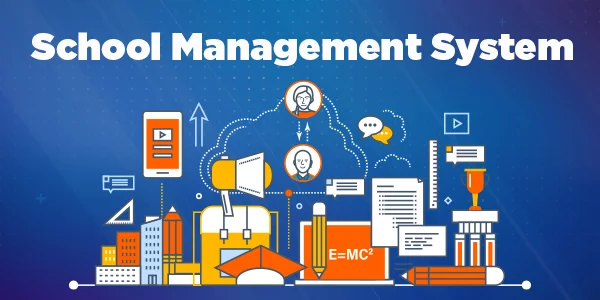A software programme or platform known as a "school management system" aids educational institutions in effectively managing numerous administrative and academic activities. It acts as a centralised platform for processing, storing, and managing data about students, instructors, staff, classes, and other school-related activities. Following are some essential components frequently present in a school management system:
1. Student Information Management: The system enables administrators to store and manage student information, such as names, addresses, and details about their academic achievement and attendance. It offers a simple method for monitoring and updating student records.
2. Enrollment and Admissions: By controlling student applications, registration, and fee payments, the system streamlines the enrollment and admissions procedure. Additionally, it might provide tools for running online admission examinations, creating admission letters, and monitoring waiting lists.
3. Timetable & Scheduling: The system aids in the creation and management of class schedules, instructor assignments, and school timetables. It makes sure that resources are used effectively, prevents conflicts, and gives students, instructors, and parents convenient access to the timetable.
4. Management of Attendance: It enables the recording and monitoring of student attendance. To automate the procedure and get rid of human mistake, several solutions offer RFID- or biometric-based attendance control.
5. Exam management and grading: The system helps with exam management, evaluating student work, and producing report cards or progress reports. It might compute GPA (Grade Point Average), support configurable grading scales, and offer performance data.
6. Collaboration and communication: The system has capabilities for instructors, students, parents, and administrators to share information. It might have options like online forums, texting, and email notifications.
7. Financial Management: This function assists in managing the school's finances, including fee collection, expense tracking, payroll administration, and the production of financial reports. It makes it possible for administrators to monitor revenue and outlays and uphold fiscal openness.
8. Library management tools are provided by the system, such as the ability to catalogue books, keep track of loans, and produce reports on library usage. It might also enable online catalogue access for the library.
9. Management of Human Resources: This module helps with handling teacher and staff data, including hiring, attendance, leave administration, and performance evaluation.
10. Portals for parents and kids: The system frequently has portals or mobile apps that give parents and students access to pertinent data like attendance, grades, assignments, and school announcements. It improves parent/student participation and communication with the school.
Note:- These are some of the essential components that are frequently present in school management systems. Nevertheless, based on the unique requirements of the educational institution, other systems might offer extra functions.


